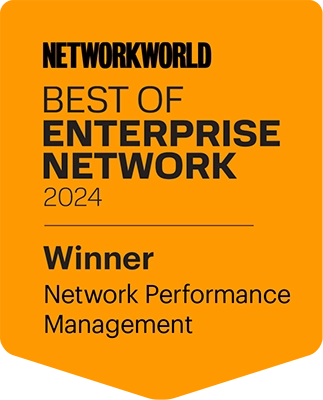Gain unmatched visibility with the data that drives observability, fortifies security, and fuels resilience
Solutions for the World’s Largest Enterprises and Service Providers
We've redefined visibility to tackle the performance, security, and availability challenges of the world's largest, most complex digital ecosystems. Dive into each of our solution areas below.
nGenius Observability
Achieve unmatched visibility across any data center, any cloud, or any network to assure the best user experience and digital service performance.
nGenius Carrier Service Assurance
Unmatched visibility into all service provider networks and services is possible with NETSCOUT actionable data insights to assure user experience.
Omnis AI Insights
Take AIOps to the next level. Automate, enhance, and secure business outcomes with high-quality, curated telemetry data.
Omnis Network Security
Scalable advanced NDR capabilities to keep the largest networks secure, powered by unmatched visibility and packet-level intelligence.
Arbor DDoS Protection
Maintain availability of key business services and applications to provide a strong user experience with the DDoS protection solution trusted by the world’s largest networks.
Visibility Without Borders Platform
As large organizations test the limits of what's possible, they're also testing the limits of what's manageable — requiring new levels of visibility into their increasingly distributed and complex digital ecosystems.
Get the actionable data to see what matters most.

Technology Partners and Integrations
The Problems We Solve
Our unique approach and deep technical expertise allow us to help our customers solve today’s biggest challenges for the most complex networks in the world.
Mission-Critical Applications
Digital Transformation
DDoS Attack Protection
FTTx Network Monitoring
Business Data Analytics
Accelerated Security Response
4G/5G Implementation
Remote Offices
Trusted by 90% of Fortune 100 Companies in more than 100 countries
The Experts Agree
From Cloud to Cybersecurity, DDoS and Mobile Networks, NETSCOUT is the recognized leader.

2025 CRN Tech Innovators Award
Intellyx Digital Innovator Award 2025

2025 Fortress Cyber Security Award

Global Infosec Awards Winner 2025

Frost & Sullivan 2025 Best Practices Award

Network World Best of Enterprise Network Winner 2024

TMC Cloud Computing Excellence Award 2024

Cybersecurity Breakthrough Award 2024
DDoS: The Next Generation
ISSUE 14 NETSCOUT DDoS Threat Intelligence Report
Multiple decades working with the world’s largest service providers and enterprises grants NETSCOUT far-reaching visibility into the global internet, allowing us to discern the pulse of the digital world.
Explore interactive reportAttack Count
8,911,312
An increase of 13% from 1H 2024
Max Bandwidth
995.4Gbps
An increase of 4% from 1H 2024
Max Throughput
650.8 Mpps
An increase of 85% from 1H 2024
Customer Stories
The Voice of NETSCOUT Customers Unleashed
NETSCOUT Smart Data is hands-down the best solution for analyzing hybrid cloud environments.
- Leading IT Service Provider

Cloud Migration
Learn more
DDoS Protection
Learn more
Unified Communications
Learn more
Visibility
Learn more
Business Continuity
Learn more
Digital Transformation
Learn more
DevOps
Learn more

































